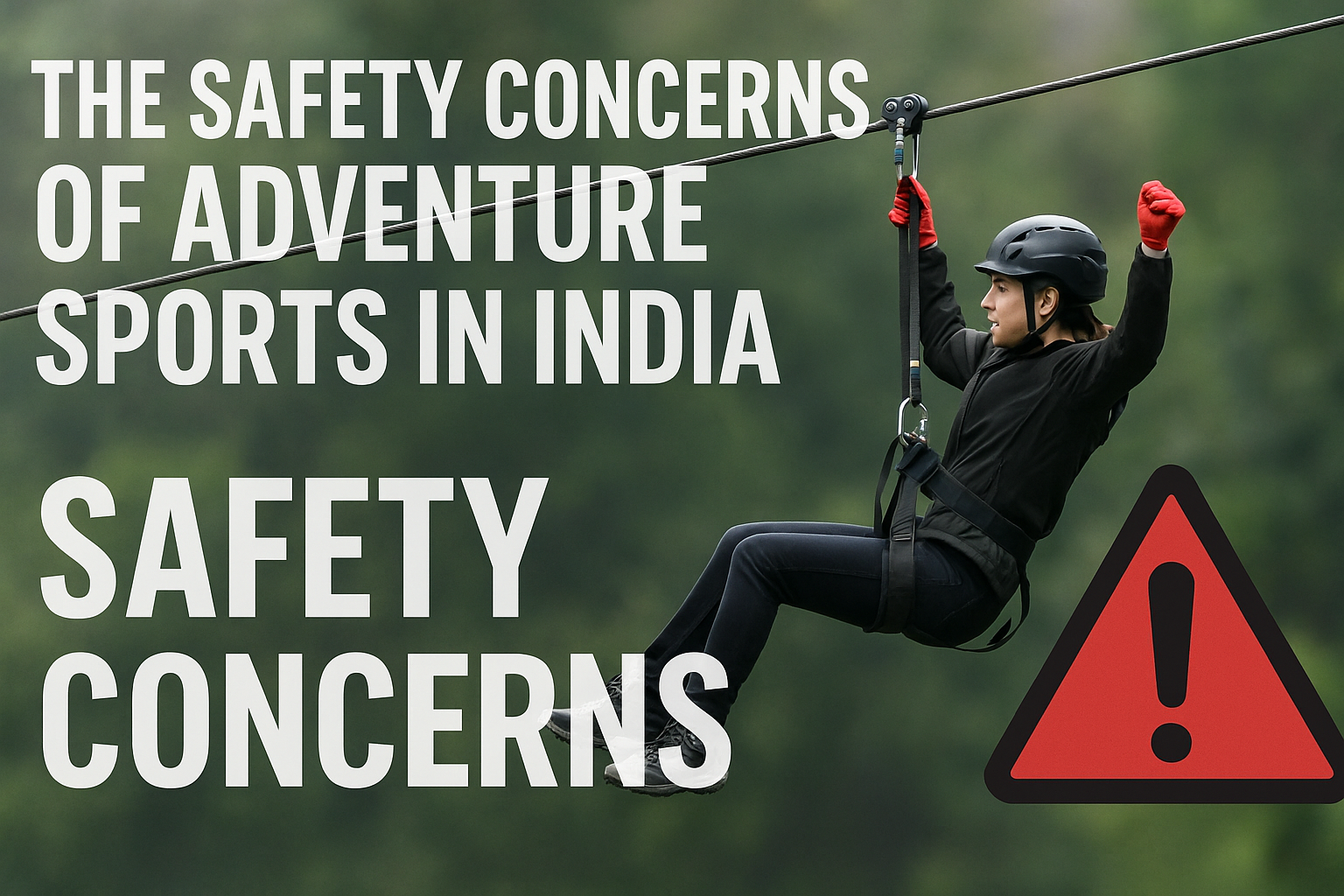Adventure sports in India, including activities like ziplining and paragliding, pose significant safety concerns.Ziplining or bungee-jumping, as well as paragliding are more popular in India particularly in regions such as Manali. While these sports can provide excitement as well as adrenaline rush, they pose substantial risks, as evidenced by the recent incident in Manali where a child fell 30 feet off the zipline and suffered serious injuries. This highlights an important issue-the issue of security.
Dangers of Adventure Sports in India: Inexperienced Instructors and Poorly Maintained Equipment
These sports are often dangerous in particular when the rules aren’t enforced or properly implemented. Many times, those with no experience try these activities with a lack of or no instruction and can result in dangerous situations. Inexperienced instructors and equipment that is not maintained can increase the risk of injuries.
Why Are Adventure Sports Dangerous in India?
- Unregulated The industry of adventure sports in India is not properly regulated. There aren’t any mandatory safety standards, nor regular checks of the operators, which increase the chance of accidents.
- Guides who aren’t experienced Many instructors who teach the field of adventure sports do not have proper training which puts the athletes at risk. Inexperienced guides are often not equipped with the knowledge required to protect themselves during these risky activities.
- Safety-conscious Equipment Maintenance issues or non-standard equipment is another important risk element. Safety equipment, like helmets or harnesses, may fail if they are not maintained or checked.
- Unsafe Inspections Prior to engaging in any adventure sport, participants typically do not undergo thorough health checks, which could cause problems, especially those with existing medical conditions.
What Needs to Change?
- Stricter Regulations: The government should establish clear guidelines and ensure the safety requirements for adventure sports operators. This will create a an environment that is safer for visitors and athletes.
- Guides who have been trained Guides and instructors guides should undergo formal education to ensure they have the skills and expertise required to be safe during their activities.
- Higher-Quality Equipment Operators should make use of high-quality, regularly checked equipment. This will help reduce the chance of equipment malfunctioning when working.
- Health checks Tourists should be screened for health before participating in activities that pose a high risk. It is a way to ensure that they’re fit enough to be able to participate without harming their health.
Conclusion
Even though adventure-sports in India provide a thrilling adventure in the wilderness but safety should be the first priority. It is crucial for the operators and the government to enforce stricter rules make sure that guides are properly trained make use of top quality equipment and have health assessments required to minimize the risk. Only then can the adventure sports can be played safely and with a sense of responsibility.

